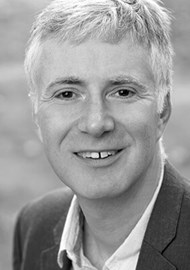The year 2020 is a pivotal year for global eye health. It marks the conclusion of ‘VISION 2020: The Right to Sight’ which has guided action for the past two decades, and the end of the World Health Organization (WHO) Universal Eye Health Global Action Plan 2014-2019 [1].
We are entering a decade of accelerated action to achieve the Sustainable Development Goals [2] and Universal Health Coverage (UHC). The WHO World Report on Vision [3] was published in October 2019. Its first recommendation is the inclusion of eye care as an integral part of UHC. The United Nations Political Declaration on UHC [4] makes clear that UHC cannot be achieved without eye care.
It is now time to focus on the future: address growing vision impairment and define where eye care sits in the wider context – health systems integration, cross-sectoral partnerships and equitable access to health services.
Scale and scope
Vision impairment is a global public health problem that needs urgent attention. The World Report on Vision tells us that at least 2.2 billion people are living with blindness or vision impairment, and at least one billion of these have a condition that could have been prevented or has yet to be addressed. These numbers are projected to increase in the next couple of decades as populations age. It is important that we work towards building strong health systems, to address existing causes of visual impairment and the growing problems of myopia and diabetic retinopathy.
Those left behind tend to be the poorest and most disadvantaged: low- and middle-income countries have four times higher age-standardised prevalence than high-income countries. The prevalence of vision impairment is often high in people living in rural areas, those with low incomes, women, older people, people with disabilities, ethnic minorities and indigenous populations. The impact of vision loss cuts across many of the Sustainable Development Goals. Improving eye health helps to reduce poverty (Goal 1) and helps to deliver on quality inclusive education, gender equality and decent work and economic growth (Goals 4, 5 and 8).
Integrated people-centred eye care
If we continue with business as usual, by 2050 three times as many people will be blind as now; half the world will be living with short-sightedness. This is not inevitable. Effective interventions are available to address the entire range of needs associated with eye conditions and vision impairment. Some are among the most feasible and cost-effective of all healthcare interventions.
The World Report on Vision sets out the framework for countries to guide action to strengthen eye care within and across their health systems. It recognises that one of the key criticisms of VISION 2020 (and indeed, many other ‘vertical’ health programmes) has been its isolation and targeted focus on eye health alone. Its key recommendation is the implementation of integrated people-centred eye care.
"If we continue with business as usual, by 2050 three times as many people will be blind as now; half the world will be living with short-sightedness"
Eye care services should be managed and delivered so that people receive a continuum of eye care interventions covering promotion, prevention, treatment and rehabilitation, addressing the full spectrum of eye conditions. Eye care within primary care will need to be strengthened and services coordinated across the different levels and sites of care within and, crucially, beyond the health sector. This means developing partnerships not just within the health system, but also outside – especially across sectors like education, human resources and transport. Finally, we need to re-double our energies towards ensuring that national health plans include eye care. We need to ensure that eye care professionals are counted as part of national assessments for health care professionals.
Of course, on its own, the World Report on Vision will not be enough. Critically, we need to mobilise political will and persuade governments to adopt and implement its recommendations and provide the resources necessary to fully integrate eye care as a core part of UHC. IAPB’s Global Assembly https://ga2020.iapb.org in Singapore in October 2020 will be the opportunity for the global eye care sector to come together to discuss how to make this a reality.
References
1. Universal eye health: a global action plan 2014–2019. WHO:
https://www.who.int/
blindness/actionplan/en/
2. Sustainable Development Goals. United Nations:
https://www.un.org/sustainabledevelopment/
sustainable-development-goals/
3. World report on vision. WHO, 2019:
https://www.who.int/publications-detail/
world-report-on-vision
4. WHO welcomes landmark UN declaration on universal health coverage. WHO:
https://www.who.int/news-room/detail/
23-09-2019-who-welcomes-landmark-un
-declaration-on-universal-health-coverage
(All links last accessed February 2020)
COMMENTS ARE WELCOME





